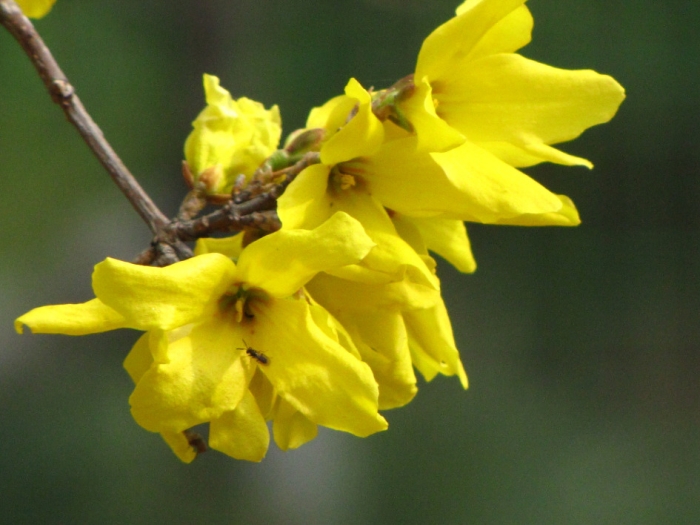Korean Goldenbell
(Forsythia koreana)
Korean Goldenbell (Forsythia koreana)
/
/

용천(김성기)
CC BY 2.0 kr
Image By:
용천(김성기)
Recorded By:
Copyright:
CC BY 2.0 kr
Copyright Notice:
Photo by: 용천(김성기) | License Type: CC BY 2.0 kr | License URL: https://creativecommons.org/licenses/by/2.0/kr/deed.en | Uploader: Storiated | Publisher: Wikimedia Commons | Title: Forsythia_koreana.jpg | Notes: VicuñaUploader 1.20 |





















Estimated Native Range
Summary
Forsythia koreana, commonly known as Korean Goldenbell, is a deciduous shrub native to the mountainous regions and open woodlands of Korea. It typically grows to about 3 meters (9.8 feet) in height and is noted for its upright to spreading habit. The leaves of Forsythia koreana are oval, serrated, and measure 3–12 cm (1.2–4.7 inches) in length, with a dark green upper surface and a paler underside, without the blue tint mentioned in the original description. In early to mid-spring, it produces an abundance of bright yellow flowers before the leaves emerge, making it a highly ornamental plant. The flowers are quite showy, with four petals each, and they cover the branches, creating a striking display.
Korean Goldenbell is valued for its vibrant spring bloom and is often used in gardens and landscapes for mass plantings, hedges, and as a specimen shrub. It is relatively low-maintenance, requiring minimal pruning to maintain its shape. This shrub thrives in full sun to part shade and prefers well-drained soils, although it is adaptable to various soil types. It is drought-tolerant once established, making it suitable for a range of garden settings. While generally disease-resistant, Forsythia koreana can occasionally suffer from leaf spot or crown gall. It is not known to have aggressive roots or other significant problems.CC BY-SA 4.0
Korean Goldenbell is valued for its vibrant spring bloom and is often used in gardens and landscapes for mass plantings, hedges, and as a specimen shrub. It is relatively low-maintenance, requiring minimal pruning to maintain its shape. This shrub thrives in full sun to part shade and prefers well-drained soils, although it is adaptable to various soil types. It is drought-tolerant once established, making it suitable for a range of garden settings. While generally disease-resistant, Forsythia koreana can occasionally suffer from leaf spot or crown gall. It is not known to have aggressive roots or other significant problems.CC BY-SA 4.0
Plant Description
- Plant Type: Shrub
- Height: 2.5-5 feet
- Width: 2.5-5 feet
- Growth Rate: Moderate
- Flower Color: Yellow
- Flowering Season: Spring
- Leaf Retention: Deciduous
Growth Requirements
- Sun: Full Sun, Part Shade
- Water: Medium
- Drainage: Fast, Medium
Common Uses
Bank Stabilization, Deer Resistant, Drought Tolerant, Fragrant, Hedges, Low Maintenance, Showy Flowers
Natural Habitat
Native to mountainous regions and open woodlands of Korea
Other Names
Common Names: Gaenari
Scientific Names: , Forsythia viridissima var. koreana, Forsythia koreana, Forsythia koreana f. autumnalis, Forsythia koreana f. pilosa, Forsythia koreana var. autumnalis, Forsythia koreana var. pilosa, Forsythia pilosa, Rangium koreanum, Rangium koreanum var. autumnalis,
GBIF Accepted Name: Forsythia koreana (Rehder) Nakai